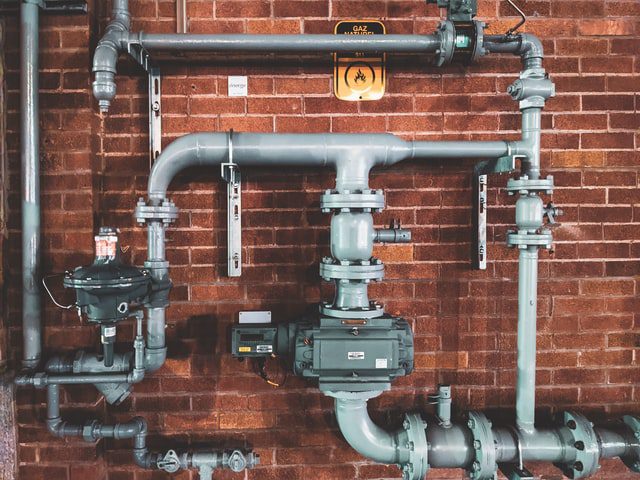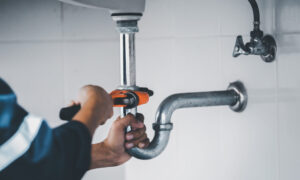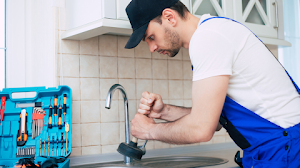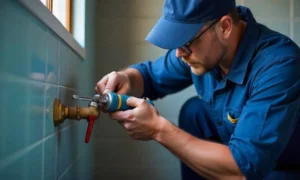Everyone wants a place they call home, and constructing a new home is part of the American dream. There’s nothing quite like the feeling you get when building your new home. You feel challenged and, at the same time, excited to meet those challenges. Then when the job is complete, you feel a sense of accomplishment, security, and pride.
However, the construction of your new home does not come without problems, and one area where problems often occur is in the plumbing. Pipes can get damaged, broken, or clogged, leading to unpleasant living conditions in your new home.
Most people take plumbing for granted, yet it is one of the most common areas where problems arise. A professional plumber can thoroughly inspect your pipes identifying existing problems and highlighting areas of potential concern in the future.
Common Plumbing Problems
According to abetterplumberco.com, here are some common plumbing problems often encountered when constructing your new home:
Clogged pipes are one of the most common plumbing problems, resulting in highly unpleasant living conditions. Sewage backup, overflowing wastewater, and foul smells wafting throughout the house are all common side effects of clogged pipes.
One of the most common causes of pipes becoming clogged is the growth of tree roots. Tree roots will naturally seek out nutrients and moisture inside your pipes. Tree roots can grow inside your pipes, causing them to become clogged and the flow of wastewater impeded.
Other factors that cause pipe blockage include improper installation, building material neglect, wastage, and using cheap materials when building the pipes. Sewerage systems are often interconnected, which means a problem in one system can affect the entire sewerage system overall. If one pipe is clogged, this can cause problems for your single sewer system and the entire block’s sewage system.
One definition of a drain is a channel or pipe that carries off surplus liquid, and like when a pipe gets clogged, a drain pipe can get blocked. Common causes of a blocked drain include random debris such as building materials, grease buildup, discarded food bits, and dirt and soil.
Blocked drains can lead to associated health problems. For example, when a drain is blocked, this can cause sewage and wastewater loaded with bacteria to flow back into sinks. The bacteria microbes spread diseases and viruses and can cause allergic reactions. Contaminated water can also cause skin inflammation and irritation.
Blocked drains can also cause unpleasant odors throughout a building, structural damage to homes, proliferation of molds and pests, slow drainage, water contamination, leaks and higher utility bills.
Blocked drains cause liquid buildup in your pipes which can eventually lead to a weakening of your home’s structural integrity. Liquid escaping from pipes can compromise the foundations of a building.
One common problem experienced in newly constructed domiciles is the lack of hot water. When there is not enough hot water this may be caused by problems with your water heating system or by damaged pipes and defective installation. Check the tips before buying a hot water system for new homes.
All water heating systems have a thermostat which may malfunction or sediment may build up in your water storage tank. Either of these will cause a lack of hot water in your home. Another common cause of a lack of hot water is damaged or leaking pipes. The pipe acts as the hot water delivery system and when it is damaged or leaking the water pressure is minimized. To fix a leaking pipe a professional plumber should be called.
Leaky faucets can occur in any home, whether old or newly constructed. At first glance, a leaky faucet may not seem like a big problem, but a leaky faucet can quickly turn into a plumbing emergency, and a leaky faucet can have long-term detrimental effects.
Like in economics with the trickle-down theory, a leaky faucet can cause problems drip by drip. A leaky faucet slowly but surely causes water buildup and increases your water utility bill. This is particularly problematic for people who own commercial properties.
Rot and mold are also common problems associated with a leaky faucet. The continual moisture supplied by a leaky faucet encourages mold to grow, which in turn can cause breathing problems for members of your household.
Rot is another problem commonly associated with a leaky faucet, and it can cause extensive damage to any woodwork included in your home’s structure.
A prevalent cause of increased water bills is a continually running toilet. All toilets have a toilet valve which is the part of the toilet that refills the water bowl after the toilet is flushed. Sometimes the water valve gets broken, resulting in the toilet running continually. In turn, this can cause damage to your home if the water spills over and leaks out of the bowl, and a continually running toilet will cause your bill to increase substantially.
What Plumbing Areas Should Be Inspected?
Before making a final decision regarding purchasing a house, it is essential to check the plumbing fixtures. Because plumbing is out of sight, it is also often out of mind, yet it is an essential part of any structure. You can conduct a plumbing inspection yourself or call in an expert to give you a realistic appraisal. Areas of the house that should be subject to inspection include:
- Sinks in the kitchen and bathrooms
- Water Pressure
- Toilets
- Water Heater
- Sewage Drain Pipes
- Septic Tank
- Basement/Crawl Space Plumbing
- Slab Leak Detection
- Sump Pump
- Air Conditioner Drainage Pipe
Standard House Inspections and Specific Plumbing Inspections.
Typically, a house inspection will involve inspecting the entire physical structure from the roof to the floors and the loft to the basement. A home inspection will also include checking the plumbing, heating, and cooling systems.
However, when it comes to specialized areas like plumbing, a general inspection is only cursory, and it is often better to avail of the services of a professional plumber who can do a more thorough inspection. An inspection conducted by a professional plumber will spot any current problems or possible future problems and may well catch things that a cursory house inspection has missed.
If you plan to have two inspections done, get the general inspection done first and then provide a copy of the first report to the plumber who does the more detailed plumbing-specific inspection.
A plumbing inspection identifies any current problems and possible future problems with your cooling and heating systems. It will also identify any general plumbing issues and can save you substantial amounts of money in the future.
Key Takeaway
Plumbing issues that go unchecked can become highly costly and come back to bother you when you most need water. These common new construction plumbing problems are important to look out for. Don’t allow a plumbing problem to ruin your day; instead, plan ahead of time and avoid it from happening. For a thorough inspection of your plumbing system, you should call professional plumbers. A professionally conducted inspection will identify any current problems with your heating, cooling, and plumbing systems, plus it can highlight any potential problems that may occur in the future.



































